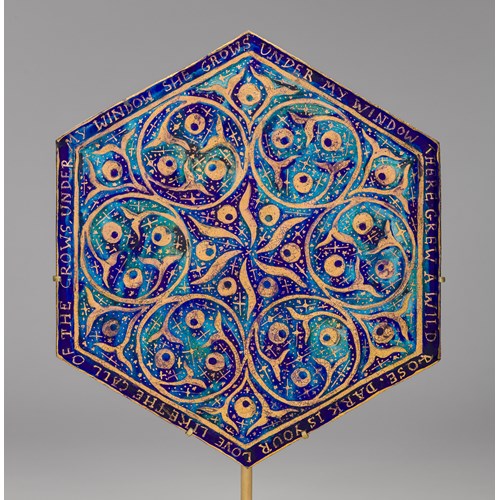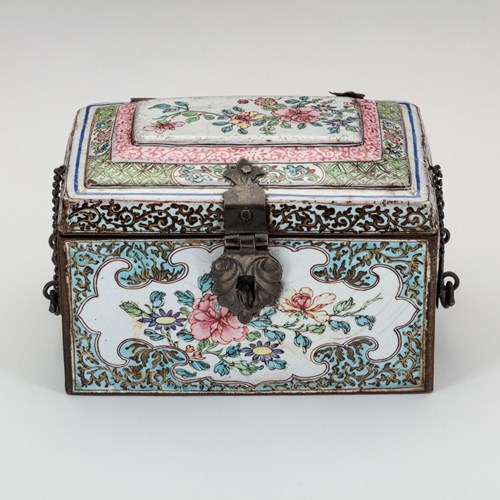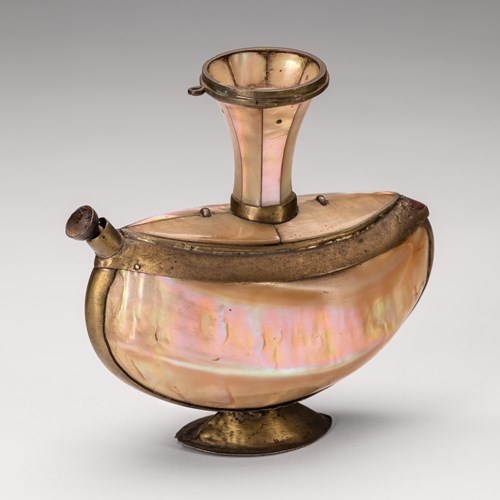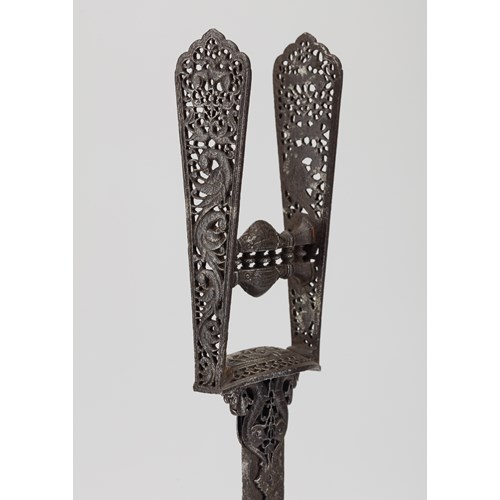Marketplace
Bronze Incense Burner with Arabic Inscription
This solid-bronze censer on three cloud-shaped feet dates to the late 18th / early 19th century Qing dynasty. The base is cast with an apocryphal six-character mark which reads 'made in the Zhengde period'. The Zhengde Emperor (Zhu Houzhan) was the 11th emperor of the Ming dynasty, reigning from 1505-1521.1 However, Zhengde reign marks (nianhao) continued to be used into the 17th and 18th century. The form of this censer is consistent with bronze censers of the early Qing dynasty such as the 18th-century example held in the British Museum (accession no. 1894,0108.11).
Arabic inscriptions are held in three cartouches, in relief against a punched ground. They read:
al-hikma lillah / al-qudra lillah / al-shukr lillah
‘Wisdom belongs to God. Power belongs to God. Thanks be to God’.
This box may once have been part of a set, comprising a brush pot, censer, and a box, designed to sit on a scholar's desk. Examples of these may be seen in the British Museum (accession nos 1894,0108,26 and 1894,0108.30) and in the Amir Mohtashemi collection (stock no. A5722). Incense was used both to perfume rooms and clothing, but also as a mindfulness practice in Buddhist worship and for Muslim scholars.2
n.b. accession nos are clickable links.
1 'Zhengde', Encyclopedia Britannica, 1 January 2024. Retrieved from https://www.britannica.com/biography/Zhengde on 7 February 2024.
2 'A Brief History of Incense in China', The Feuerle Collection. Retrieved from https://www.thefeuerlecollection.org/de/history-of-incense/ on 7 February 2024.
Arabic inscriptions are held in three cartouches, in relief against a punched ground. They read:
al-hikma lillah / al-qudra lillah / al-shukr lillah
‘Wisdom belongs to God. Power belongs to God. Thanks be to God’.
This box may once have been part of a set, comprising a brush pot, censer, and a box, designed to sit on a scholar's desk. Examples of these may be seen in the British Museum (accession nos 1894,0108,26 and 1894,0108.30) and in the Amir Mohtashemi collection (stock no. A5722). Incense was used both to perfume rooms and clothing, but also as a mindfulness practice in Buddhist worship and for Muslim scholars.2
n.b. accession nos are clickable links.
1 'Zhengde', Encyclopedia Britannica, 1 January 2024. Retrieved from https://www.britannica.com/biography/Zhengde on 7 February 2024.
2 'A Brief History of Incense in China', The Feuerle Collection. Retrieved from https://www.thefeuerlecollection.org/de/history-of-incense/ on 7 February 2024.
Plus d'œuvres d'art de la Galerie





 Ionia_T638206163534868960.jpg?width=500&height=500&mode=pad&scale=both&qlt=90&format=jpg)



